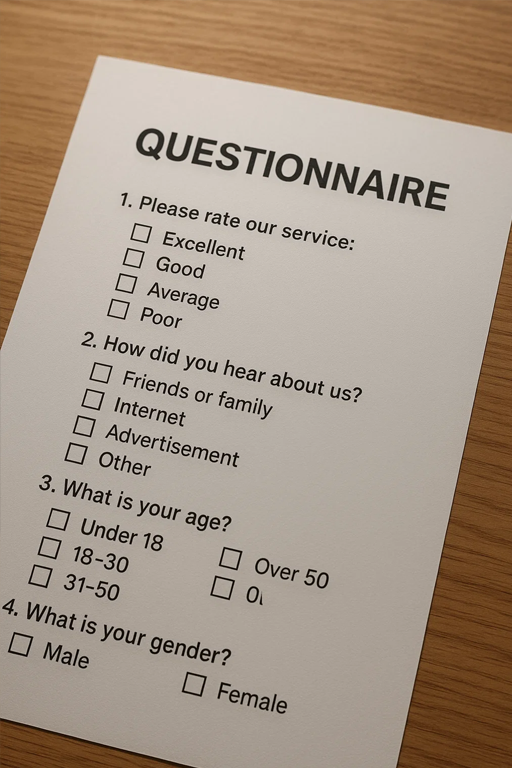Revision Notes
2.4 Research methods, sources and types of data
Primary Research
Primary research is when you collect new information yourself, directly from people or sources. This kind of research gives you original, up-to-date data that’s specific to your project. It helps you understand your audience, test ideas, and make informed decisions.
Focus groups
A focus group is a small group of people brought together to talk about a product, idea or design. A moderator leads the discussion and asks questions to gather opinions.
Advantages:
- Can give detailed opinions and group feedback
- Allows for open discussion and idea sharing
- Useful for understanding emotional reactions or personal views
- Can be time-consuming and expensive to organise
- Results may not represent a larger audience
- Dominant voices in the group can influence others

Interviews
An interview is a one-to-one or small group conversation where specific questions are asked. It can be structured (set questions) or unstructured (more open).
Advantages:
- Provides in-depth answers and personal insights
- Can ask follow-up questions to explore ideas further
- Good for expert opinions or detailed feedback
- Time-consuming to carry out and analyse
- Responses may be biased or influenced by the interviewer
- Not suitable for collecting large amounts of data quickly

Online surveys
An online survey is a digital form shared through email, websites or social media. It usually contains multiple choice, rating or short-answer questions.
Advantages:
- Can reach a large number of people quickly
- Data is easy to collect and analyse
- Low cost and easy to distribute
- People may skip questions or not respond
- May lack depth in the answers
- Requires access to the internet and devices

Questionnaires
A questionnaire is a set of written questions used to collect information. It can be handed out on paper or shared online and is often used to gather opinions or preferences.
Advantages:
- Can collect information from many people
- Quick to complete and analyse
- Can include a mix of question types
- Responses may be brief or lack explanation
- Hard to ask follow-up questions
- Respondents may misunderstand the questions
